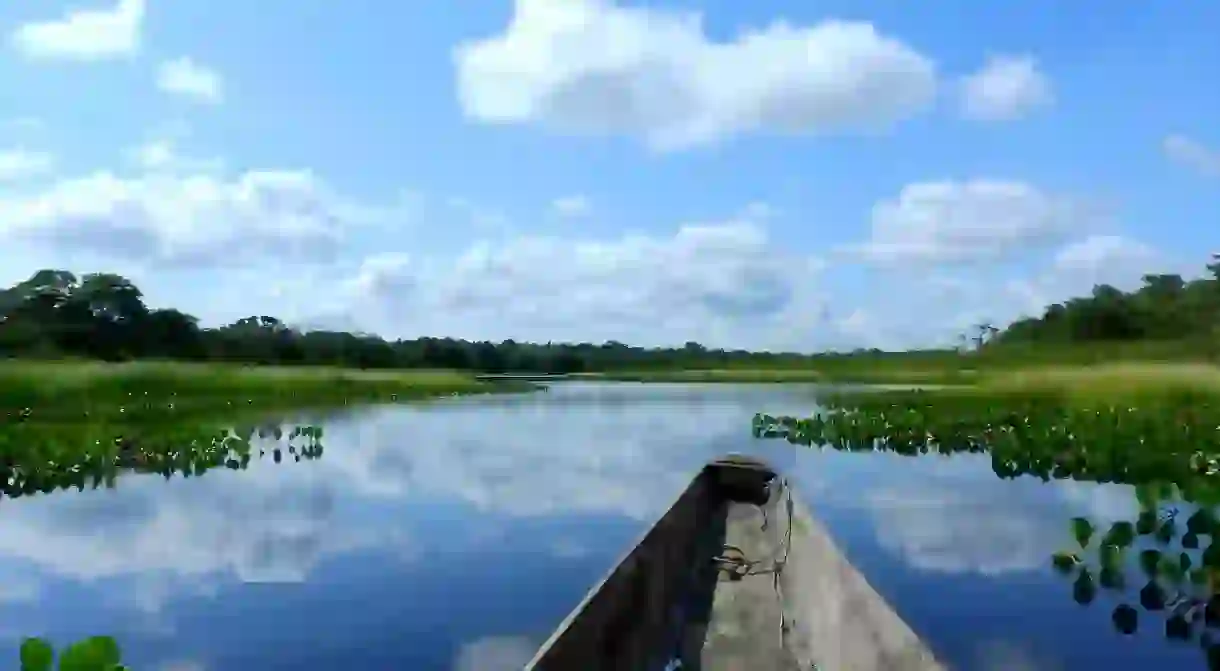11 Colombian Destinations You Won't Read About in the Guidebooks

Colombia is one of the hottest travel destinations on earth right now, and the number of international visitors is growing each year. There’s a fairly well-established tourist trail nowadays – Salento, Medellin, Cartagena, Bogotá, the Santa Marta area – but there are so many unique and wonderful destinations (especially in the Amazonian east of the country) that barely merit a mention in most guidebooks. So here are 11 of those Colombian destinations that your Lonely Planet won’t tell you about…
La Playa de Belén
La Playa de Belén is easily one of the prettiest small towns in Colombia, but one that never seems to merit more than cursory mentions in the guidebooks, perhaps due to the often uneasy security situation in the north of Norte de Santander department, not far from where La Playa is located. However, the area around the town is safe and the delightful cobbled streets and colonial architecture of the town, not to mention the beautiful Estoraques National Park nearby, make it well worth a visit.

Florencia
The capital of once-turbulent Caquetá department is a large city on the frontier of the Andes and the Amazon, and the perfect base from which to enjoy the many excellent tourism activities on offer – rafting the Orteguaza River, exploring the beautiful natural reserves of El Horeb, Las Dalias and Las Palmas, or seeing wild monkeys at lunch at La Calera Amazonica restaurant.
Pijao
Pijao is like Salento without the tourists and rarely seems to get mentioned in guidebooks in the chapter about the Coffee Region. This is a shame, because the lovely traditional buildings, picturesque setting and laid-back atmosphere make Pijao perhaps the perfect town to visit for an authentic Coffee Region experience. Not to mention that it’s the base for arguably the best coffee tour in Colombia: the WakeCup Experience by Experiencia Cafetera.

San José del Guaviare
This small city on the frontier of the Colombian plains and the Amazon has something of a bad reputation, having been a focal point for much of the Colombian conflict and, consequently, it’s never mentioned in Colombia guidebooks. However, the Guaviare region is beginning to shake off this reputation and visitors can enjoy amazing jungle landscapes, excellent biodiversity, ancient Indigenous rock paintings and much more.
The Mavecure Hills
Located near the Venezuelan border in the eastern jungle department of Guainia, the Cerros de Mavecure – or Mavecure Hills – are three rocky hills in the middle of the vast jungle, which are remnants of the Guyana Shield, some of the oldest rocks on planet earth. Located alongside a Puinave Indigenous community, and offering some of the most breathtaking views in Colombia (particularly at dawn when the sun rises over the jungle), the Mavecure Hills are one of the most beautiful places in Colombia that you never see in the Top 10 lists.

Araracuara
Another off-the-beaten-track jungle destination, Araracuara was once the site for the most notoriously dangerous penal colony in Colombia but has slowly begun to open up to tourism in recent years. The Devil’s Canyon of Araracuara lies alongside the village, and is one of the most stirring sights in Colombia, as the huge Caqueta River squeezes through a narrow canyon creating some of the wildest rapids in the country.
Tuparro National Park
One of Colombia’s largest National Parks is also one of its least visited: the huge Tuparro National Park in eastern Vichada department saw around 300 tourists in 2016, and not many more this year. It’s a stunning ecosystem of tropical savannah, jungles, and ancient rocky hills, all fringed by the mighty Orinoco River. The raging rapids of Maipures, in the heart of the park, were described as the “8th Wonder of the World” by Alexander Von Humboldt, so the place has some good pedigree!

Valledupar
The Caribbean city of Valledupar often gets left out in favor of the more popular cities of Cartagena and Santa Marta and, although Valledupar can’t offer their seaside location or extensive colonial architecture, it has its own unique charm. Located alongside the southern Sierra Nevada mountains, the countryside around the city is beautiful, and if you can visit in February you can enjoy the fantastic Vallenatio Legend Festival, one of the most important folkloric festivals in Colombia.
Isla Fuerte
This small Caribbean island lies just off the coast of Cordoba department, yet receives a fraction of the publicity of other islands closer to Cartagena. With the opening of a new hostel there, that is starting to change, but Isla Fuerte’s white-sand beaches, top-notch diving and delicious food still remain satisfyingly secret.

The Combeima Canyon
This gorgeous high-altitude canyon in Tolima department is less than half an hour from the regional capital of Ibague and makes a welcome change from the more touristy Andean valleys like Cocora. The Combeima Canyon offers amazing views of the snowcapped Tolima Volcano, and treks to the summit depart from there. When you throw in great birdwatching, lovely Swiss-style chalets and hotels, and nearby hot-springs, the Combeima Canyon is a great destination for those travelers looking to get away from the ‘Gringo Trail.’
The Llanos Orientales
The vast eastern plains – made up of the departments of Casanare, Meta and Arauca – are one of the most unique and biodiverse regions of Colombia and yet they usually only merit a cursory mention in most guidebooks. With their Colombian cowboy culture, breathtaking sunsets and wildlife safaris – where you can spot anacondas, giant anteaters, capybaras and even jaguars – the Eastern Plains of Colombia have a mountain of tourism potential.













